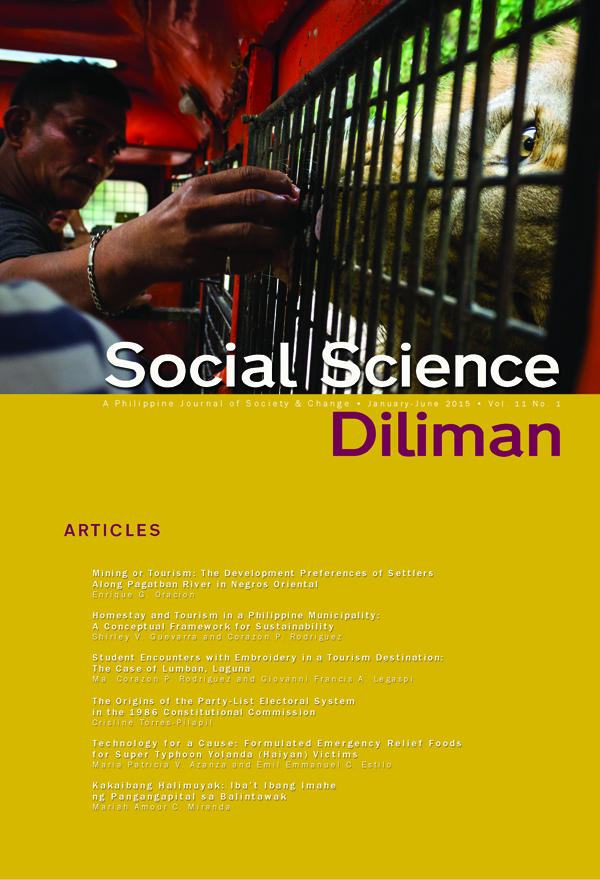Technology for a Social Cause: Formulated Emergency Relief Foods for Super Typhoon Yolanda (Haiyan) Survivors
Abstract
This study details how ready-to-eat (RTE) rice and rice-cornstarch noodle (bihon) product formulations of the College of Home Economics (CHE) of the University of the Philippines Diliman (UPD) were used to produce emergency relief foods for the survivors of super typhoon Yolanda (international name: Haiyan) in the Philippines. The RTE products were developed using established pasteurization technologies covered with commercial sterility test certifications from the Pilot Food Plant (PFP) of UPD-CHE and published food safety considerations for acidified foods. They do not require any cooking or reheating before consumption. They were prescribed with a one-month shelflife at ambient storage temperature (28±2°C) during deployment as relief foods. About 5,000 and 3,000 production units of the RTE cooked rice (200 g/pack) and bihon (150 g/pack), respectively, were produced at the PFP. Around 300 volunteers composed of faculty, staff, alumni, students, and acquaintances of UPD-CHE’s departments and organizations manned the two-week staggered production, scheduled from late November to the f irst week of December 2013. In cooperation with organizations and private entities, the RTE products were deployed without cost from UPD to the stricken areas of Aklan, Iloilo, and Leyte. Feedback from the recipients of the products was favorable, indicating that the RTE foods are useful as emergency relief ration.
Keywords: Disaster relief, food technology, typhoon Yolanda, Haiyan


